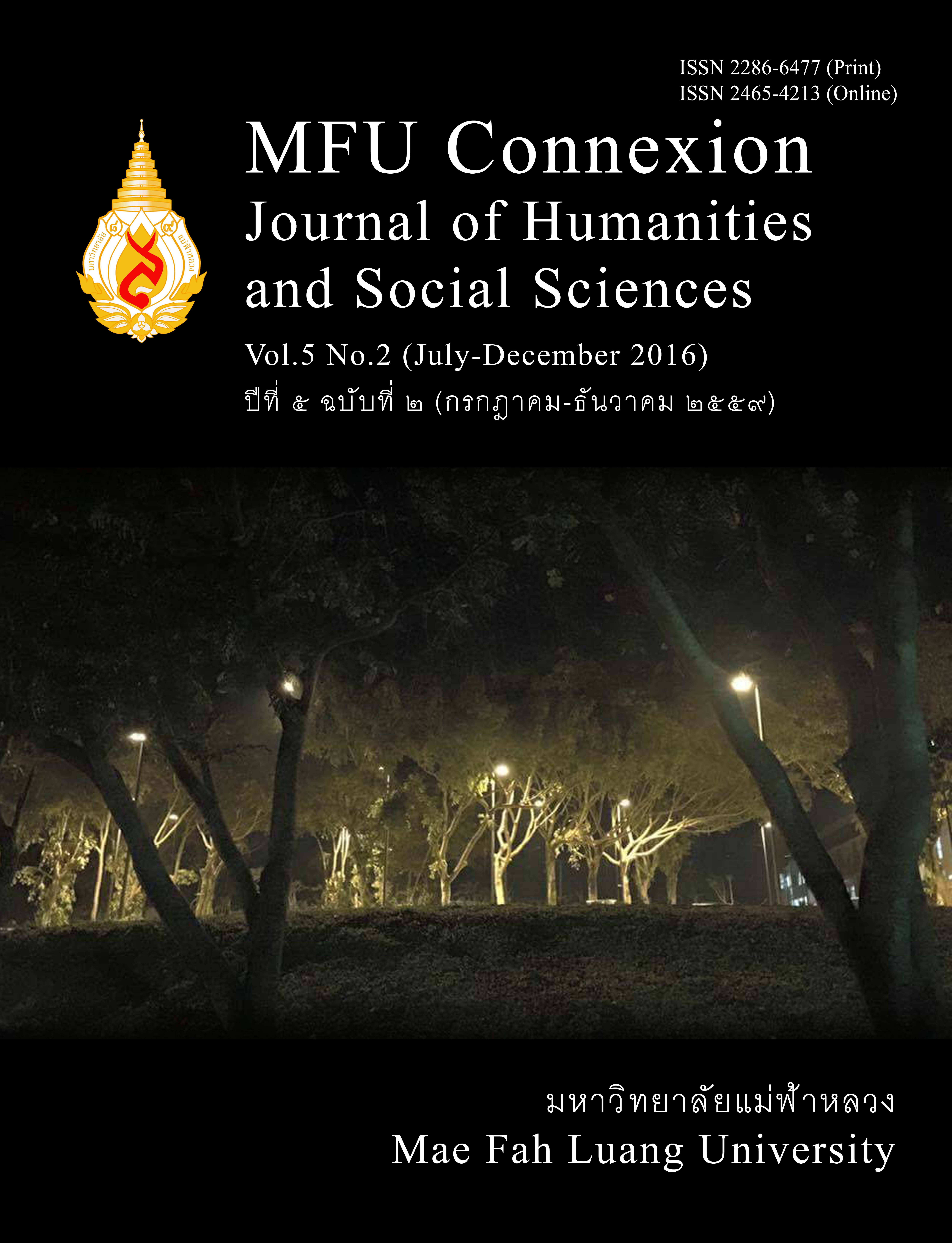Economic Impacts of ASEAN's Future Economic Integration through FTAs
Main Article Content
Abstract
This study examines the possible choices of the Association of Southeast Asian Nations (ASEAN) towards trade liberalization with other countries through reviewing the current trade policies in both national and regional prospects, and to estimate the impact on GDP of current and future ASEAN's trade agreements using Computable General Equilibrium (CGE) model. It is found that the ASEAN is likely to expand its economic bargaining power integrating in the regional and bilateral levels with four possible paths including the EU, Regional Comprehensive Economic Partnership (RCEP), Turkey, and Pakistan which the last two countries are negotiating the bilateral Free Trade Agreements (FTAs) with many countries in the ASEAN. Trade barriers, tariff and non-tariff issues, are likely to be eliminated gradually while many attractive foreign direct investment policies will be more active among all ten countries.
Additionally, the results from CGE model suggested that there is a mutual but unequal trade gain from the bilateral trade agreements under many possible scenarios. As expected, signing FTAs with the existing ASEAN's partners as Regional Comprehensive Economic Partnership (RCEP) is able to deliver the highest economic impact to the ASEAN members compared to other choices. Moreover, a removal of only tariff can generate tiny positive impact to negotiating countries. Thus, the next challenge is a reduction of non-tariff measures, for example, trade regulations and quotas, between ASEAN countries and its trading partners.
Article Details
Copyright
Connexion: Journal of Humanities and Social Sciences has an exclusive right to publish the accepted articles in any form. However, the author retains the following rights:
1. The right to the ownership of the article;
2. The right to use all or part of the article in his/her other works;
3. The right to re-produce the article for personal use or for use in the author’s organisation, in which case the author must obtain permission from Connexion: Journal of Humanities and Social Sciences;
4. The right to make copies of all or part of the work for educational use or for the author’s use in classroom teaching; and
5. The right to include the work (both the preprinted and printed versions) in an institutional repository.
References
Ando, M., & Urata, S. (2007) The impacts of East Asia FTA: A CGE model simulation study, Journal of International Economic Studies, vol. 11, no. 2, pp. 3-73.
Appleyard, D. R., Field, A. J., & Cobb, S. L. (2010) International economics, 7th edition, New York: McGraw-Hill.
Ariyasajjakorn, A., Gander, J. P., Ratanakomut, S., & Reynolds, S. (2009) ASEAN FTA, distribution of income, and globalization, Journal of Asian Economics, vol. 20, pp. 327-335.
ASEAN Secretariat. (2014) Selected basic ASEAN indicators, [Online], Available: https://www.asean.org/asean/about-asean [25 Dec 2015]
ASEAN Secretariat. (2015) ASEAN, EU discuss future direction of partnership, [Online], Available: https://www.asean.org/news/item/asean-eu-discuss-future-direction-of-partnership?category_id=27 [20 Dec 2015].
ASEAN Secretariat. (2016) Overview of ASEAN-EU dialogue relations, [Online], Available: https://asean.org/?static_post=overview-of-asean-eu-dialogue-relations [27 Jun 2016].
Boumellassa, H., Decreux, Y., & Fontagne, L. (2008) Economic impact of a potential free trade agreement (FTA) between the European Union and ASEAN, Paris: CEPII.
Burfisher, M. E. (2011) Introduction to computable general equilibrium models, Cambridge, MA: Cambridge University Press.
European commission. (2016) Association of South East Asian Nations (ASEAN), [Online], Available: https://ec.europa.eu/trade/policy/countries-and-regions/regions/asean [27 Jun 2016]
Francois, J., Manchin, M., Norberg, H., & Pelkmans, A. (2009) Trade impact assessment (Trade SIA) of an EU-ASEAN free trade agreement, Rotterdam: IIDE.
Fukunaga, Y., & Isono, I. (2013) Taking ASEAN+1 FTAs towards RCEP: A mapping study (ERIA Discussion Paper Series 2013-02), Jakarta: Economic Research Institute for ASEAN and East Asia.
Fugazza, M., & Maur, J. C. (2006) Non-tariff barriers in a non-tariff world, Geneva: Division on International Trade in Goods and Services, and Commodities, The United Nations Conference on Trade and Development.
Hayakawa, K., & Chang, K. I. (2008). Border barriers in agricultural trade and the impact of theirelimination: Evidence from East Asia, Chiba, Japan: Institute of Developing Economies Japan External Trade Organization.
Hosoe, N., Gasawa, K., & Hashimoto, H. (2010) Textbook of computable general equilibrium modelling, Eastbourne: Palgrave Macmillan.
Itakura, K. (2013) Impact of liberalization and improved connectivity and facilitation in ASEAN for the ASEAN Economic Community, Jakarta: Economic Research Institute for ASEAN and East Asia.
Kawai, M., & Wignaraja, G. (2007) ASEAN+3 or ASEAN+6: Which way forward?, Paper presented at the Conference on Multilateralising Regionalism, Geneva, Switzerland.
Kitwiwattanachai, A., Nelson, D., & Reed, G. (2009) Quantitative impacts of alternative East Asia free trade areas: A computable general equilibrium (CGE) assessment, Journal of Policy Modeling, vol. 32, pp. 286-301.
Kiyota, K., & Stern, R. M. (2007) Economic effects of a Korea-U.S. free trade agreement, Michigan: Research Seminar in International Economics.
Lee, H., & Itakura, K. (2012) The implication of region-wide FTAs for Japan and emerging Asia, [Online], Available: https://www.aeaweb.org [10 Dec 2015].
Li, C., & Whalley, J. (2012) China and the TPP: A numerical simulation assessment of the effects involved, Cambridge, MA: National Bureau of Economic Research.
Lofgren, H., Harris, R. L., & Robinson, S. (2002) A standard computable general equilibrium (CGE) model in GAMS, Washington, DC: International Food Policy Research Institute.
Nakajima, T. (2002) An analysis of the economic effects of Japan-Korea FTA: Sectoral aspects, Niigata, Japan: Economic Research Institute for Northern Asia.
New Zealand Foreign Affairs and Trade. (2016) Regional comprehensive economic partnership (RCEP), [Online], Available: https://www.mfat.govt.nz/en/trade/free-trade-agreements/agreements-under-negotiation/rcep [27 Jun 2016]
The European Commission. (2008) Trade sustainability impact assessment for the FTA between the EU and ASEAN, Rotterdam: The European Commission, DG Trade.
Todaro, M., & Smith, S. (2009) Economic development, 10th edition, New York: Pearson.
United Nations Development Programme. (2014) World development indicator 2014, Washington, DC: World Bank.
Urata, S. (2008) An ASEAN+6 economic partnership: Significance and tasks. Asia Research Report 2007, vol. February 2008, pp. 1-19.
World Bank. (2015) World Databank, [Online], Available: https://www.worldbank.org [10 Dec 2015]
Yarbrough, B., & Yarbrough, R. (2006) The world economy trade and finance, 7th edition, Connecticut: Thomson.


